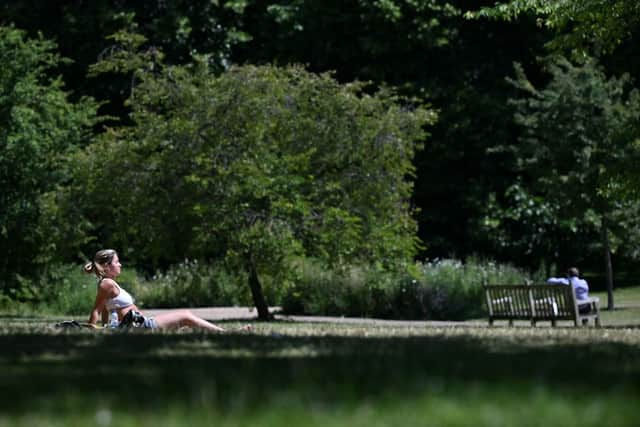When is the hottest part of the day? Times when sun is the hottest and how to stay cool in the heatwave
and live on Freeview channel 276
Temperatures in the UK are soaring, but if you’re trying to stay out of the heat you may be wondering when the hottest part of the day usually takes place.
Here’s what you need to know.


When is the hottest part of the day?
According to the Met Office, the hottest part of the day takes place from late-morning into mid-afternoon.
Advertisement
Hide AdAdvertisement
Hide Ad“If you do go out for exercise or into your garden, try to avoid the hottest part of the day (11am to 3pm) and seek shade where possible. Avoid being in the sun for long stretches,” the Met Office said.
How can I keep cool in the heat?
There are a number of ways to try and stay cool in the heat, including:
- Closing blinds or curtains to try and keep your house cool
- At night, keep your sleeping area well ventilated
- Take cool showers or baths and/or sprinkle yourself several times a day with cold water
- Avoid too much exercise when very hot
- Drink plenty of fluids, but not alcohol as this dehydrates the body.
- Keep your vehicle well ventilated to avoid drowsiness, and take plenty of water with you and have regular rest breaks
- Wear lightweight, light-coloured clothing, high factor sunscreen and a wide-brimmed hat
- Reapply an appropriate factor sun cream at regular intervals during the day
How can I keep my skin safe from high UV levels?
A small amount of UV radiation is needed in the production of vitamin D, but too much exposure to the sun can have serious effects on your skin and eyes.
Sunburn occurs when your skin is overexposed to UV radiation, usually from the sun’s rays but also from sunbeds.
Advertisement
Hide AdAdvertisement
Hide AdUV radiation can also have both short and long term effects on the condition of our eyes.
UV radiation from the sun or sunbeds can damage the eye’s surface tissues as well as the cornea and lens, and UV can also burn the surface of the eye much like sunburn on skin.
To protect your eyes from UV exposure wear good quality UV protective sunglasses.
Long term exposure to UV radiation can be more serious and is a significant risk factor for cataract development.
Advertisement
Hide AdAdvertisement
Hide AdYou should keep covered and wear a hat and sunglasses, spend time in the shade and use a high factor sun cream with good UVA protection to protect yourself.
You can also check when UV levels are the highest by checking the forecast and planning ahead.
Comment Guidelines
National World encourages reader discussion on our stories. User feedback, insights and back-and-forth exchanges add a rich layer of context to reporting. Please review our Community Guidelines before commenting.
